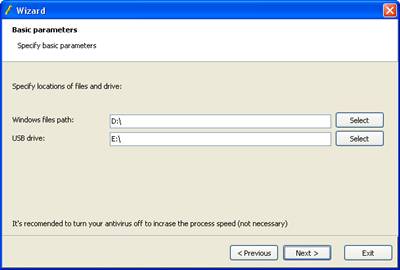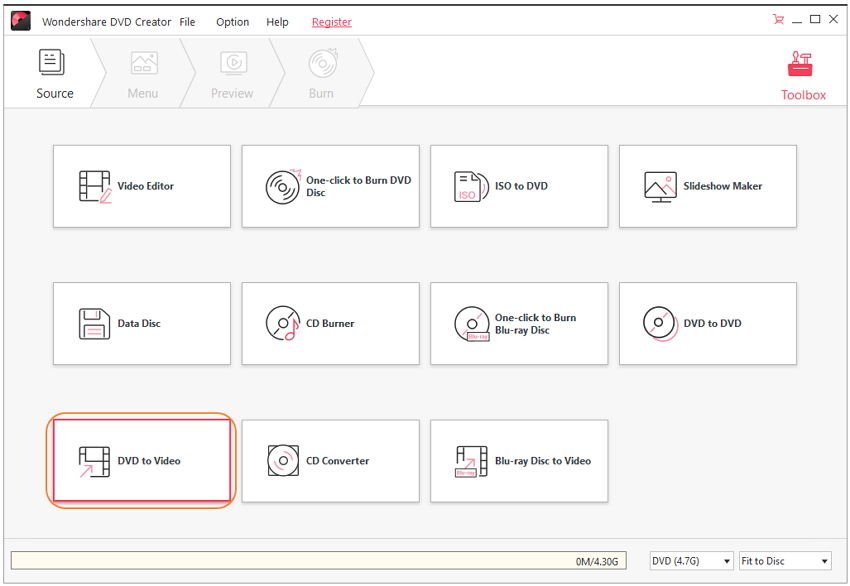

- #CLONE WINDOWS 7 DVD TO USB STICK INSTALL#
- #CLONE WINDOWS 7 DVD TO USB STICK DRIVERS#
- #CLONE WINDOWS 7 DVD TO USB STICK CODE#
- #CLONE WINDOWS 7 DVD TO USB STICK PC#
are already automatically searched and installed).
#CLONE WINDOWS 7 DVD TO USB STICK DRIVERS#
Note that depending on the hardware, you are asked to reboot once to update the ACPIPIC/ACPIAPIC device (other drivers like network, sound. Afterwards, now Windows 7 boots fine on both laptops from USB HDD ! I am familiar with this, so on the laptop that boots fine, I just applied my great old usb_all.reg that changes important USB-related registry entries (usbehci, usbohci, usbuhci, usbccgp, usbhub, USBSTOR).

#CLONE WINDOWS 7 DVD TO USB STICK CODE#
OK after disabling the automatic reboot, I saw that the BSOD is with the dreaded stop code 0x7B.
Let's assume USB disk partition is U: and Windows partition in U:\name.vhd is V: in host computerĬopy bootmgr and Boot directory from V:\ to U:\īcdedit /store U:\Boot\BCD /set detecthal on. If you want to native-boot VHD, adjust BCD entry for native-boot VHD with the following steps. If you just want to use VHD as source for cloning to USB disk, skip the following steps and goto Cloning Windows 7 above. In Disk Management in Windows 7 host, attach VHD. In virtual machine, run usbbootfix.bat as administrator. Copy usbbootfix.bat to VHD (by network share or mount VHD in host). #CLONE WINDOWS 7 DVD TO USB STICK INSTALL#
Start virtual machine, boot from DVD, install Windows 7.Attach VHD and Windows 7 DVD or ISO to virtual machine.
#CLONE WINDOWS 7 DVD TO USB STICK PC#
In Windows Virtual PC folder or VirtualBox, create virtual machine RAM 1GB or more. Use Disk Management or Diskpart to Create VHD image, size 15GB or more. Create partition in USB disk (U:), format, make it active partition. Only Windows 7 Enterprise and Ultimate (including Release Candidate) support native-boot VHD. Note : Not all editions of Windows 7 support native-boot VHD. Install in VHD by using virtual machine (Windows Virtual PC or VirtualBox) This is not preferred way to install, just another possibility. Verify that source and destination drive are correct and press a key to start copy.Īnother way to install. run clone7.bat from cmd.exe running as SYSTEM account. If dst is in VHD, set bcddrive to active partition of the host disk containing dst. Set appropriate value for src and dst in clone7.bat. Open clone7.bat in notepad or other text editor. You can increase its screen buffer size by right-click title bar, select Properties, Layout page. Psexec.exe -s -i -d cmdWhen you run this shortcut as administrator, it will open cmd.exe running as SYSTEM account. from another Windows Vista/7 (not on source partition) Get Sysinternal PsExec. Boot from Windows 7 DVD and press Shift+F10 to run cmd.exe. Open cmd.exe running as SYSTEM account.  Write names of unwanted files and directories in cloneexclude.txt and save in the same directory. Save clone7.bat in some working directory. The clone will use more disk space than source. Note : This copy method using xcopy does not create hard links. Disconnect SATA disk and put in USB disk enclosure.Ĭlone Windows 7 from IDE/SATA to USB hard disk Pro: Increase chance of successful boot when move to different machines. It will set all known disk controller drivers to Start=0. Reg add "HKLM\SYSTEM\CurrentControlSet\Control\Session Manager\Memory Management" /v DisablePagingExecutive /t REG_DWORD /d 1 This setting may help prevents USB drivers code from being paged out.ĭriver's data are not affected by this settings, so ther is still some possibility that USB drivers will fail when in low memory state. Use diskpart to mark partition as active (if it is not the only partition in the computer), Boot from Windows 7 setup DVD (or other media),Ĭreate a partition in SATA (if not already created),. You can create a new partition and mark it as active partition before boot from Windows 7 DVD This tutorial is result of discussion in this thread -> Boot Windows 7 from USB hard disk (Search for NT 6.x fast installer, BootDriverFlags, PollBootPartitionTimeout.) It is now considered obsolete since there exist better ways.
Write names of unwanted files and directories in cloneexclude.txt and save in the same directory. Save clone7.bat in some working directory. The clone will use more disk space than source. Note : This copy method using xcopy does not create hard links. Disconnect SATA disk and put in USB disk enclosure.Ĭlone Windows 7 from IDE/SATA to USB hard disk Pro: Increase chance of successful boot when move to different machines. It will set all known disk controller drivers to Start=0. Reg add "HKLM\SYSTEM\CurrentControlSet\Control\Session Manager\Memory Management" /v DisablePagingExecutive /t REG_DWORD /d 1 This setting may help prevents USB drivers code from being paged out.ĭriver's data are not affected by this settings, so ther is still some possibility that USB drivers will fail when in low memory state. Use diskpart to mark partition as active (if it is not the only partition in the computer), Boot from Windows 7 setup DVD (or other media),Ĭreate a partition in SATA (if not already created),. You can create a new partition and mark it as active partition before boot from Windows 7 DVD This tutorial is result of discussion in this thread -> Boot Windows 7 from USB hard disk (Search for NT 6.x fast installer, BootDriverFlags, PollBootPartitionTimeout.) It is now considered obsolete since there exist better ways.







 0 kommentar(er)
0 kommentar(er)
